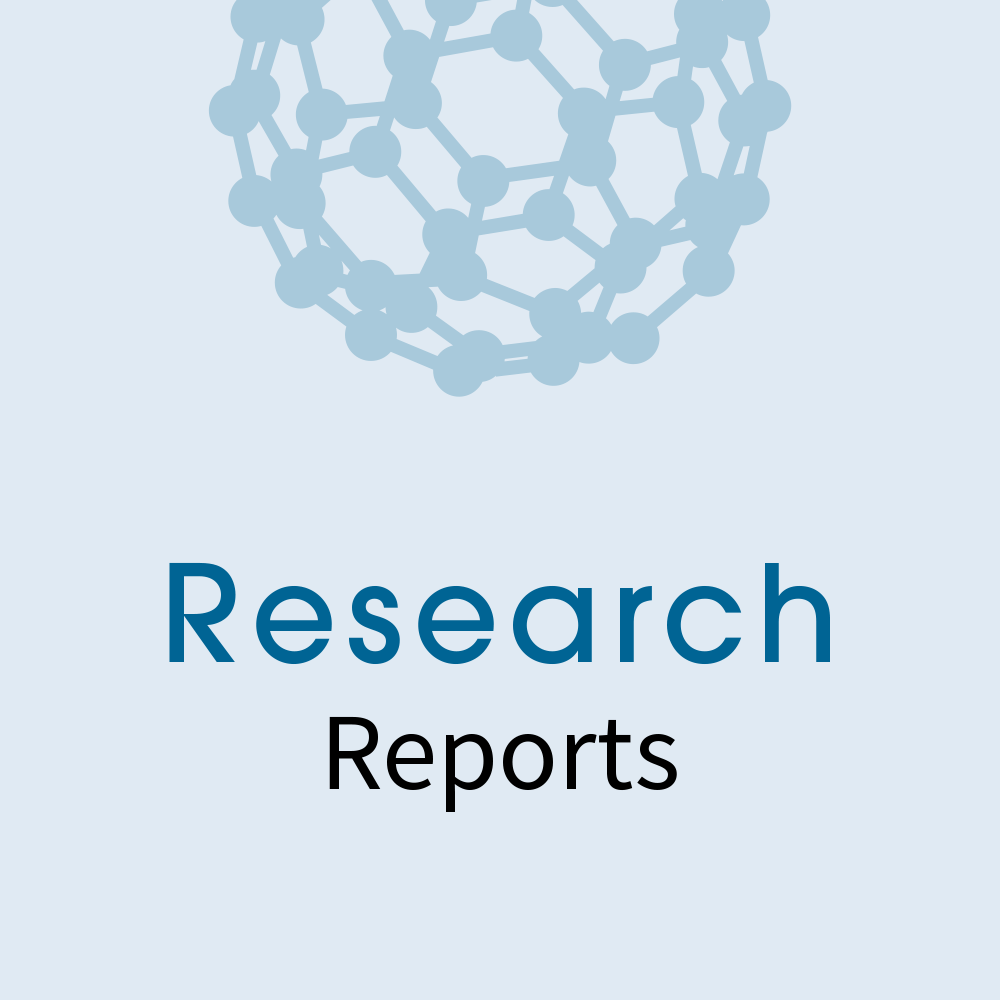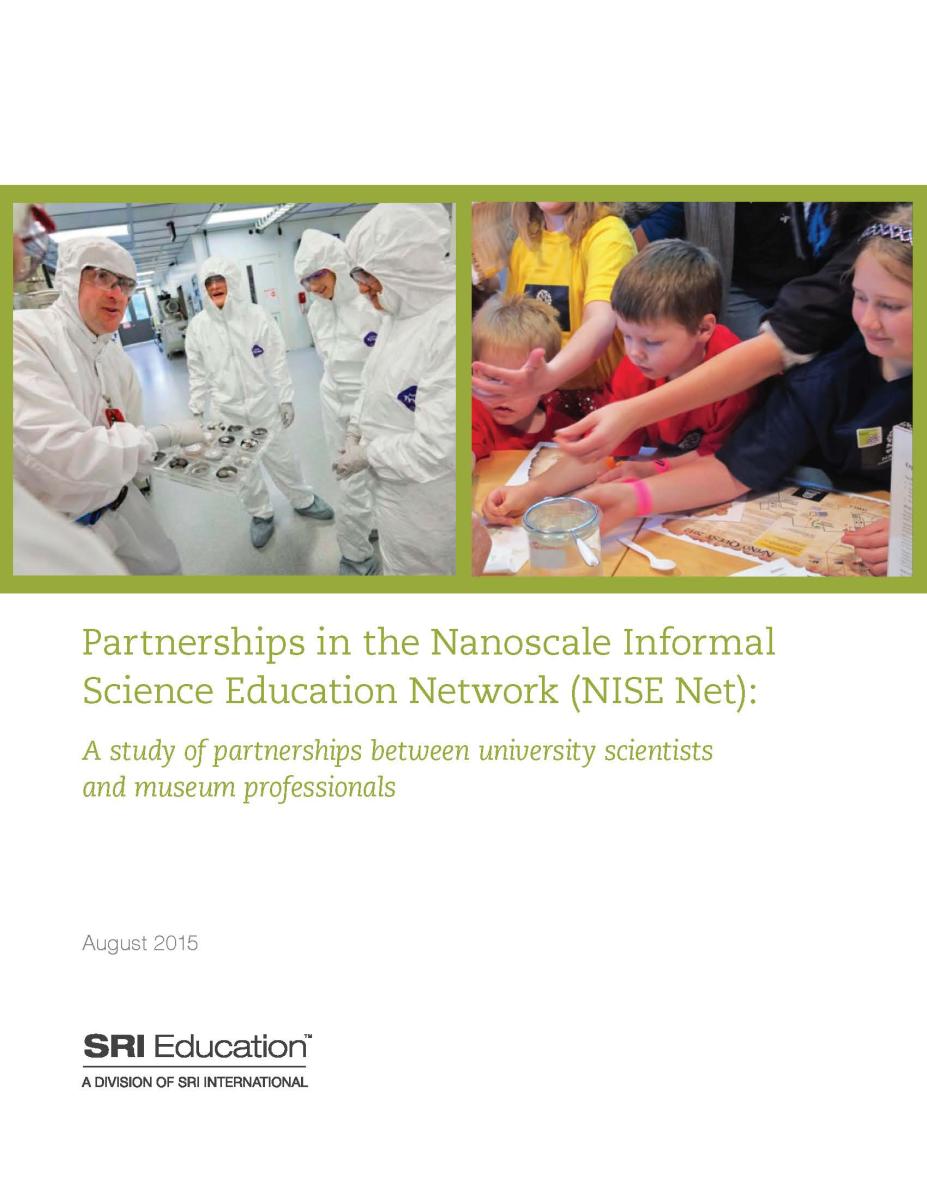DESCRIPTION
This report describes findings from SRI’s research on Nanoscale Informal Science Education Network (NISE Net)-supported partnerships between university scientists and museum professionals to educate the public about nano-scale science, engineering, and technology ("nano"). These kinds of partnerships have the potential to leverage the expertise of both scientists and museum professionals, which is a particularly important benefit in an area as complex and as difficult to distill for public consumption as nano. At the same time, cultural differences between the institutions of universities and museums make for particular challenges that scientists and museum professionals must work through in order to gain the benefits of collaborating. This report focuses on understanding how scientists and museum professionals deal with these challenges, and how they ultimately leverage each other’s perspectives and expertise when they collaborate to produce products intended to educate the public about nano. Research questions for this study focus on 1. the key aspects of museum-scientist partnerships that support their collaborative efforts, 2. how products they create are used in communicating nano to the public, and 3. whether and how these partnerships build capacity for those who participate. Over a period of five years, from 2010 to 2015, SRI researchers collected and analyzed data from a number of different sources, including interviews, observations of meetings and events, reviews of NISE Net artifacts, and reviews of other NISE Net research and evaluation reports. We collected data on the Nano & Society workgroup, which we reported on elsewhere (Lundh, Stanford, & Shear, 2014); conducted numerous interviews with university scientists and museum professionals about their partnerships; observed NanoDays events and interviewed event facilitators; attended meetings and conducted interviews related to other general Network activities; and gathered data related to the development of the NISE Net content map.
Authors:
Patrik Lundh, Tina Stanford, and Linda Shear, SRI Education
Timeline:
2011-2015
Suggested Citation:
Lundh, P., Stanford, T., Shear, L. (2015). Partnerships in the Nanoscale Informal Science Education Network (NISE Net): A study of partnerships between university scientists and museum professionals. Menlo Park, CA: SRI International.
DESCRIPTION
This report describes findings from SRI’s research on Nanoscale Informal Science Education Network (NISE Net)-supported partnerships between university scientists and museum professionals to educate the public about nano-scale science, engineering, and technology ("nano"). These kinds of partnerships have the potential to leverage the expertise of both scientists and museum professionals, which is a particularly important benefit in an area as complex and as difficult to distill for public consumption as nano. At the same time, cultural differences between the institutions of universities and museums make for particular challenges that scientists and museum professionals must work through in order to gain the benefits of collaborating. This report focuses on understanding how scientists and museum professionals deal with these challenges, and how they ultimately leverage each other’s perspectives and expertise when they collaborate to produce products intended to educate the public about nano. Research questions for this study focus on 1. the key aspects of museum-scientist partnerships that support their collaborative efforts, 2. how products they create are used in communicating nano to the public, and 3. whether and how these partnerships build capacity for those who participate. Over a period of five years, from 2010 to 2015, SRI researchers collected and analyzed data from a number of different sources, including interviews, observations of meetings and events, reviews of NISE Net artifacts, and reviews of other NISE Net research and evaluation reports. We collected data on the Nano & Society workgroup, which we reported on elsewhere (Lundh, Stanford, & Shear, 2014); conducted numerous interviews with university scientists and museum professionals about their partnerships; observed NanoDays events and interviewed event facilitators; attended meetings and conducted interviews related to other general Network activities; and gathered data related to the development of the NISE Net content map.
Authors:
Patrik Lundh, Tina Stanford, and Linda Shear, SRI Education
Timeline:
2011-2015
Suggested Citation:
Lundh, P., Stanford, T., Shear, L. (2015). Partnerships in the Nanoscale Informal Science Education Network (NISE Net): A study of partnerships between university scientists and museum professionals. Menlo Park, CA: SRI International.
DOWNLOAD FILES
Credits
SRI International
Developed for the NISE Network with funding from the National Science Foundation under Award Numbers 0532536 and 0940143. Any opinions, findings, and conclusions or recommendations expressed in this product are those of the authors and do not necessarily reflect the views of the Foundation.
Creative Commons Attribution Non-Commercial Share Alike 3.0 United States (CC BY-NC-SA 3.0 US).
View more details

NISE Network products are developed through an iterative collaborative process that includes scientific review, peer review, and visitor evaluation in accordance with an inclusive audiences approach. Products are designed to be easily edited and adapted for different audiences under a Creative Commons Attribution Non-Commercial Share Alike license. To learn more, visit our Development Process page.


